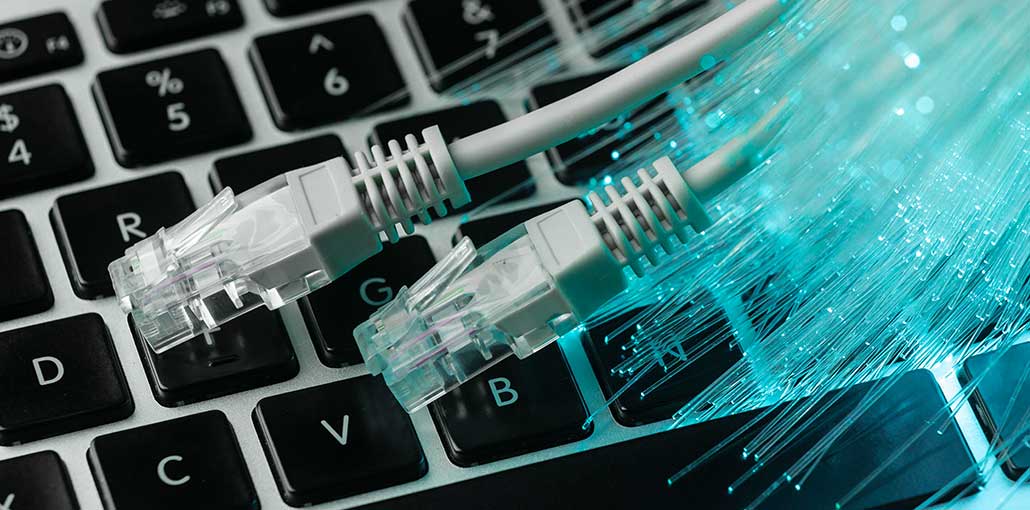Did you know that there are actually about 10 types of ethernet cables? While the technological advancements are great, especially those with an impact on your internet connection, the number of choices can be overwhelming for most people. If you’re trying to pick one, this guide should help you decide what kind of cable you actually need.
Shielded vs. unshielded
Before we tackle the cable categories, let’s discuss shielded vs. unshielded ethernet cables quickly.
- Shielded: Ethernet cables that are shielded are wrapped individually in a type of shield, such as foil, copper tape, polymer, aluminum, etc. This shielding prevents all kinds of malfunctions. While this is clearly a benefit that ensures your cables last longer and performs better, they are harder to maneuver while installation and usually are more expensive.
- Unshielded: As you might have guessed, unshielded ethernet cables are designed without shields. Instead, they’re wrapped helically and twisted together as a means of preventing malfunctions. These types of cables are cheaper and easier to install because they are thinner, more pliable, and definitely more versatile. However, they aren’t as tough as shielded cables.
When choosing between the two, your consideration is whether or not your environment (home or office) would require extra protection. Are you living near an airport that is prone to high levels of electrical noise? A shielded ethernet cable would be your best option. Does your house layout prevent you from running cables flexibly? An unshielded ethernet cable makes the installation more possible.
Also read: The High Internet Speed and Home Artificial Intelligence: A Success Partnership
Ethernet Cable Categories
Here are your ethernet cable options, each with its own set of pros and cons:
Cat 3
Features: Unshielded | 10Mbps max transmission speeds | 16MHz max bandwidth
There used to be a Cat-1 and Cat-2, but they are no longer recognized by the TIA (Telecommunications Industries Association). Cat-3 is also an outdated type of ethernet cable, but it can still be used for ethernet networks 10Mbps and up to 16Mhz.
Cat 5
Features: Unshielded | 10 to 100 Mbps max transmission speeds | 100MHz max bandwidth
Cat-5 replaced the Cat 3 version and was the standard of ethernet cable for many years. While many homes still have this type of cable lying around (yes, that infamous drawer of old cables), new installations no longer use this. Cat-5 ethernet cables are considered obsolete as of 2022.
Cat 5e
Features: Unshielded | 1,000Mbps to 1Gbps max transmission speeds | 100MHz max bandwidth
Cat 5e providers a slightly higher specification to Cat5, which means it could perform at higher data speeds and transmit data quicker than cat5. What can be confusing here is that Cat5 and Cat 5e ethernet cables look exactly alike, so it’s never really a good idea to choose a cable based on mere design/look alone.
Cat 6
Features: Unshielded or Shielded | 10Gbps max transmission speeds (but only up to 55 meters) | 250MHz max bandwidth
Designed with outer foil or braided shield, cat-6 ethernet cables are built with newer technology to prevent noise interference and corrosion. It could support internet speeds of up to 10 Gbps, but just up to within 55 meters. If you are installing new internet for a new home, it is likely that the cables going to be used are cat 6 ethernet cables.
Cat 6a
Features: Shielded | 10Gbps max transmission speeds (but only up to 55 meters) | 500MHz max bandwidth
The “a” in Cat 6a refers to “augmented,” which means the design was changed to support double the bandwidth and provide higher transmission speeds.
Cat 7
Features: Shielded | 100Gbps max transmission speeds (but only up to 15 meters) | 600MHz max bandwidth
This modern ethernet cable is comprised of 4 individually-shielded pairs wrapped in a single shielding. It was designed to accommodate applications that require up to 600 Mbps transmission speeds.
Also read: What is WiFi Calling and How Does it Benefit Your Businesses?
Cat 8
Features: Shielded | 40Gbps max transmission speeds (but only up to 30 meters) | 2,000MHz max bandwidth
Cat8 ethernet cable is still not widely available, but the demand is strong because it offers a HUGE jump from Cat7 cables. This type of cable uses an unprecedented 2 billion (2 GHz) signals per second and features a max data rate of 25Gbps or 40Gbps and bandwidth of up to 2000MHz. It’s going to be the go-to cabling option for data centers, gaming agencies, and other serious IT firms.
So which of them do you choose? Well, it depends on your circumstances. For example:
- If you have the cash to future-proof, pick cat8 ethernet cable.
- If your internet connection is slow (1Gbps or lower), you’ll need a Cat5 ethernet cable or newer.
- If you are replacing an ethernet cable that’s been connected to your router for years, upgrade at least 2 or 3 versions higher.
In general, if you need increased download/upload speeds and faster internet connections, pick an ethernet cable with a higher category number (cat 6, cat7, cat8).
Do note that ethernet cables become slower as the cables are longer, so choosing one rated for 100-meter over the one rated for either 10-meter or 30-meter could also affect the speed of your connection.










Leave a comment